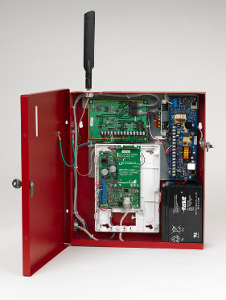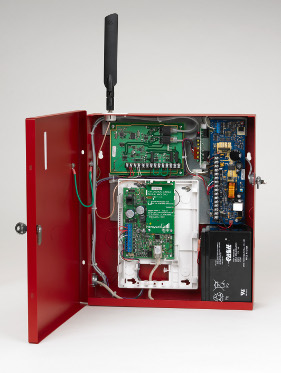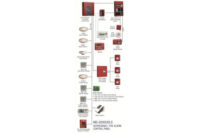Honeywell has released a fire alarm communicator that offers a choice of either IP (Internet Protocol) or GSM (Global System for Mobile Communications)cellular as its primary communications pathway. The IPGSM-DPdual path, dual primary fire alarm communicator eliminates the costly phone lines historically employed for fire alarm reporting. Utilizing IP and GSM technology together improves the reliability and speed of communications over single path technology devices while solving many fire alarm reporting dilemmas associated with challenging applications.
The new IPGSM-DP is UL-Listed to provide full Contact ID data reporting for virtually any brand of fire alarm control panel through Honeywell's AlarmNet network. A simple configuration setup allows installers to select one of two modes of operation. In mode one, IP is the primary path and GSM is the backup with SMS (Short Message Service) text serving as a secondary backup. In mode two, either IP or GSM cellular can be set as the fire alarm system's single path for reporting. A 256-bit Advanced Encryption Standard is used to secure data traveling through each pathway.
Along with regular supervision of communications pathways, the IPGSM-DP's triple-redundancy configuration offers a more reliable means for reporting maintenance alerts and alarms as compared to legacy telecommunications networks. Whether utilizing a facility's existing IP network or an AT&T GSM cellular network, the reduction of two phone lines per fire alarm control panel can deliver a substantial cost savings.
 Communicating via IP or GSM can solve the challenges present in new commercial facilities where building plans do not include the installation of phone lines either because the contractor believes them antiquated and unnecessary or too expensive to install. Challenging applications such as remote buildings on school campuses, military bases, islands surrounded by water and more, are also ideal candidates for IP or GSM fire alarm reporting.
Communicating via IP or GSM can solve the challenges present in new commercial facilities where building plans do not include the installation of phone lines either because the contractor believes them antiquated and unnecessary or too expensive to install. Challenging applications such as remote buildings on school campuses, military bases, islands surrounded by water and more, are also ideal candidates for IP or GSM fire alarm reporting.







